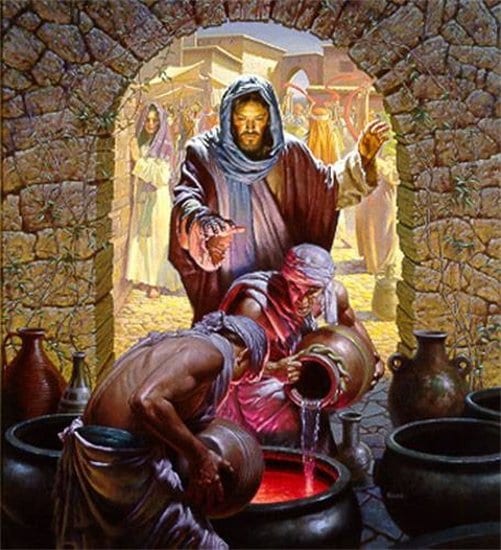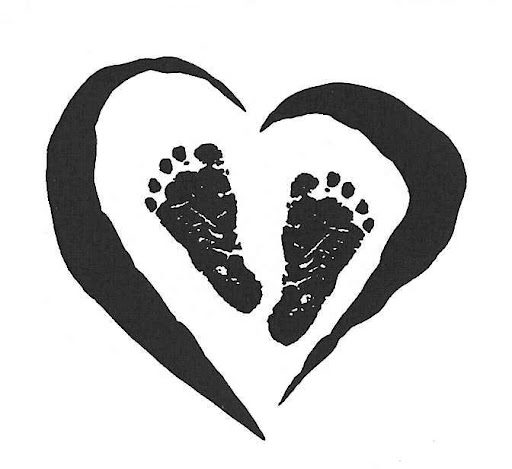
Wedding in Cana
The Wedding in Cana has traditionally been called one of the “three Epiphanies” of Christ; the other two are the Visitation of the Magi and the Baptism of the Lord. In each of these events, Jesus is manifested in one way or another as the Messiah and the Son of God. Undoubtedly, the miracle of the wedding in Cana, due to its many symbolisms, is one of the richest sources of reflection for personal prayer.
If we look closely at the first two chapters of the Gospel of John, there are a total of seven days leading to the miracle at the wedding feast in Cana. On the first day (Jn1:19-28), John the Baptist directed attention away from himself and said, “There is one among you whom you do not recognize, the one who is coming after me, whose sandal strap I am not worthy to untie (Jn1:26-27).” On the second day (Jn1:29-34), John pointed to Jesus and said, “Behold the Lamb of God who takes away the sin of the world (Jn1:29).” On the third day (Jn1: 35-42), two disciples of John left him and followed Jesus. One of them was Andrew; he then went to find his brother Simon and brought him to Jesus. On the fourth day (Jn1:43-51), Jesus found Philip and Philip brought Nathanael to Jesus. After three more days, Jesus performed His first miracle at the wedding feast in Cana. There, the glory of Jesus was revealed and the disciples began to believe in Him (Jn2:11).
What is the significance of the “seven” days? Many bible commentators agree that the number “seven” signifies perfection or completeness. The number seven appears many times in the bible, but the classic example is that God created the world in six days and rested on the seventh; i.e., the whole work of creation would not be complete without the seventh day of rest. In a way, the first miracle of Jesus in Cana marks the completion of the epiphany events and inaugurates the beginning of His public ministry.
In addition, the miracle at Cana which Jesus performed “on the third day” (Jn2:1), corresponds to God revealing Himself “on the morning of the third day” in the Book of Exodus (Ex19:16). Just as the glory of God was revealed to the Israelites at Mount Sinai, so also the glory of Christ was revealed to His disciples at Cana.
Jesus’ reply: “My hour has not yet come” can be taken to mean that it was not yet time for Him to be known publicly as the Messiah. We see the same thing happen several times in the Gospels, wherein Jesus warns His disciples and the people whom He had just healed not to tell anyone, because His hour has not yet come. Hence, only a select few were made aware of the miracle at Cana: Mary, the disciples and the servants. Even the head steward, the bride and the groom, and the other guests were oblivious of the miracle that Jesus had just performed.
With all its subtle yet deep and meaningful points, one important insight from the miracle at Cana is that God works many miracles in the world that is not made public, and yet the people who witness these miracles are changed forever.

The “Day of Prayer for the Legal Protection of Unborn Children” will be observed in all dioceses in the United States. Holy Mass in Thanksgiving for the Gift of Human Life will be offered on Saturday, January 22, 2022, at 8:30 am.

Anointing of the Sick and Blessing of the Throats
Due to the celebration of Chinese New Year on February 6, 2022, the Anointing of the Sick which is normally scheduled on the First Sunday of the month will take place on January 30, 2022. In addition, the Blessing of the Throats through the intercession of St. Blase will also take place on the same day. Therefore, immediately after the 10:30 am Mass on January 30, there will be the Blessing of the Throats followed by the Anointing of the Sick.
February 3 is the Feast Day of St. Blase. During his lifetime, St. Blase was known to be a healer. One time, he saved a child who was choking to death on a fishbone by blessing him.
Prayer: Grant us, O Lord, that through the intercession of the martyr St. Blase, we may live this life in safety and attain eternal happiness. We ask this through Christ our Lord. Amen.

Our Chinese New Year Mass and ceremony will be held on February 6, 2022. All are invited to participate.

Please check our church website hnojatl.org for the latest COVID Guidelines from Archbishop Gregory Hartmayer and the CDC。
Everyone is advised to wear a mask while inside the church buildings。Masks, hand sanitizers and sanitizing wipes are available for your use.